“Human beings are unable to be honest with themselves about themselves.
They cannot talk about themselves without embellishing.”
~ Akira Kurosawa
Bjarne Riis’s autobiography really should have been written as a Greek tragedy (Oedipus Wrecks? No, that’s being saved for the ultimate Lance Armstrong story). Prometheus was punished for stealing the gift of fire and Riis, too, seems to be being perpetually punished for his own sins. But, unlike Prometheus, Riis isn’t chained to a rock and having his liver plucked out by vultures every day. No, Riis has been punished by being given the anti-Midas touch: everything he grasps turns to shit.
Look at all that has happened to him with that 1996 Tour win, with Laurent Jalabert (a broken back just after being signed as team leader for CSC-Tiscali), Bo Hamburger (busted for EPO use but got off on a technicality), Ivan Basso (busted in Operación Puerto), Carlos Sastre (defected to Cervélo as soon as he won the 2008 Tour), Andy Schleck (defected to Leopard with the core of the Saxo Bank set-up at the end of 2009), and Alberto Contador (now the cycling world’s most pointless star signing). Every time the Dane seems to have got it right, something goes radically wrong.
You might think that Riis should have got the message by now and found something different to do with his life, but that’s not the Riis way of doing things. Back when he was a kid, starting out as a bike rider, the Dane was a winner. But then, as he moved through his teens, the wins dried up:
I didn’t develop physically as quickly as the others, and suddenly talent alone wasn’t enough to keep my winning streak going.”
When trying to qualify for the Los Angeles Olympics in 1984 Riis was told by the Danish coach that he should simply go home, hang up his bike and give up riding:
Perhaps the national coach was right. Perhaps I didn’t have it in me. And perhaps no one had ever dared to say it to my face before then.”
Instead of quitting, Riis, aged twenty, decamped to Luxembourg with another rider from Herning, Per Pedersen, and worked harder at turning the dream of a pro contract into reality. When the RMO squad started up at the end of the 1985 season, Riis and Pedersen were both competing for the same seat in the squad. Pedersen got the gig and Riis was left scrabbling for a ride for the 1986 season. In the end he got a gig with Lomme Driessens’s latest squad, Roland Van de Ven, alongside another Danish rider, Brian Holm. Riis’s time with Driessens was not happy:
Driessens [who had worked with Eddy Merckx, Freddy Maertens and Sean Kelly] loved telling old stories about heroes, villains and how to win bike races. I took it all in, but knew that there were only a few things that I could learn from him that were genuinely useful.”
One year with Roland was all Riis endured before he was dropped. He got a ride with another Belgian squad, Lucas. That turned out to be a disaster from which Riis was rescued only by the intervention of his fellow Dane, Kim Andersen, who recommended him for Bernard Tapie’s Toshiba squad. That turned out to be another disaster for the Dane. Until Riis got a chance to ride the 1988 Tour of the European Community as a member of the mixed Denmark-Luxembourg squad. There he was able to do a favour for Laurent Fignon. That favour paid off in spades the following January when Riis, aged twenty-four, without a ride and having to face the prospect of quitting the sport he’d fought tooth and nail to be a part of, got a call from Fignon’s directeur sportif, Cyrille Guimard, and joined Super U.
In his own autobiography, We Were Young And Carefree (Yellow Jersey Press), Fignon had this to say of Riis:
Bjarne was happy to get stuck in, he had a solid constitution and liked to work hard. Riding on his wheel was total joy, because he could do anything: go fast when he had to and go through a gap with perfect timing. I never had to tell him anything, never had to say ‘Come on’ or ‘Slow down.’ I glued myself to his wheel and didn’t have to do anything else. It’s not often as harmonious as that. I had got it right with him but I had no idea that he would make his name in any of the ways he eventually did. He had a ‘big engine,’ but this has to be made clear: he was a good rider but not capable of winning a Tour de France in normal circumstances.”
Super U became Castorama and Riis stayed a part of the team until things went tits up during the 1991 season and Fignon and Guimard realised they were heading for d-i-v-o-r-c-e. Riis was twenty-seven and had just watched a rider three months his junior finally step out of the shadows and win the Tour de France: Miguel Induráin. The Dane realised it was time to step up to the plate himself. And for the first time in his career Riis was somewhat spoilt for choice as to whom he’d ride with next: Fignon wanted him to move to Gatorade with him, and Ariostea’s directeur sportif, Giancarlo Ferretti, also put an offer on the table.
Gatorade would have been more of the same, Riis laying his future on the line for Fignon, whereas Ferretti was offering Riis the chance to ride for himself as well as working for the greater glory of Moreno Argentin and Rolf Sørensen. The choice was easy for an ambitious domestique and Riis signed with Ferretti. Two years with Ariostea were followed by two years with Emanuele Bombini at Gewiss. And then came 1996. Telekom. That Tour de France win.
That Tour de France win is where we have to loop back on the story of Riis’s rise from rags to riches and consider how it was actually achieved. Consider how and when doping entered the Bjarne Riis story. Unlike Simon Pures such as Stephen Roche who never, ever saw any doping during their careers, Riis was aware of its existence from as early as his first year in the pro ranks, at Roland. Riding kermesses in 1986 he witnessed firsthand the use of amphetamine-filled syringes. He and Brian Holm both made the same choice: doping was not for them. At the Flèche Wallonne in 1986 Roland’s soigneur offered Riis an injection:
It hadn’t taken long for me to realise that I had a lot to learn before I’d find my own place and my own identity in the cycling world. But what I did already know was that I didn’t want to turn over and let a stranger stick a needle in my backside and inject me with goodness-knows-what. It was the first time anyone had ever offered to inject me with anything.”
Riis refused to accept the injection unless he was told what it contained. The soigneur responded by shooting the contents of the syringe down the sink:
I could be pretty certain that I wouldn’t be getting much help or support from him again in a hurry after that. He didn’t look the sort who would let getting snubbed like that be forgotten any time soon either. But it was my body, my health and my career, and if I was going to take any medicines it was going to be though my own choice, and on my own terms and something that was properly tried and tested. I certainly wasn’t going to let a Belgian masseur force me into it.”
That Belgian masseur was Jef D’Hont. Ten years on from that incident at the 1986 Flèche, Riis would be reunited with D’Hont at Telekom, where the Belgian had been employed since Walter Godefroot took over the squad in 1992. D’Hont only survived a year with Riis on the team before becoming surplus to requirements at the end of the 1996 season. Eleven years after that, in 2007, D’Hont published an autobiography in which he blew the gaff on doping at Telekom.
Brian Holm, who had joined Telekom in 1993 and stayed through to 1997, also published an autobiography in 2007 and in it he confessed to having doped. Then the floodgates opened: Christian Henn, Bert Dietz, Udo Bölts, Erik Zabel, and Rolf Aldag all confessed to having doped at Telekom. Andreas Schmid and Lothar Heinrich, Telekom’s doctors at the Freiburg University Hospital, confessed to having facilitated their doping. And then Riis too finally confirmed what everyone already knew: he was a doper, just like all the rest. Unlike some of the others, though, Riis took full responsibility for his doping, didn’t try to blame D’Hont or Schmid or Heinrich. He had, he insisted, doped of his own free will.
Like many pros, Riis’ doping began with vitamin injections, which he had to learn to administer himself. Once that needle goes under the skin it becomes ever easier to rationalise the contents of the syringe, as Riis was to learn.
As well as witnessing drug use at kermesses Riis was also aware of the gossip in the peloton:
You heard people talking about riders who would experiment with different products, but no one seemed to have any concrete knowledge of who these riders were exactly or how they were doing it.”
Eventually Riis became a rider willing to experiment with different products. He doesn’t say when it was that he started doping (it was before 1992 and all the implications are that it was after he joined Super U) but the product – cortisone – was easily sourced. Having seen a marked improvement in his form from the cortisone, the Dane was faced with a new choice:
To continue using what I saw as relatively harmless products, or whether I was going to graduate to the kind of stuff that was said to really make you move. Maybe the latter was what I needed if I wanted to commit to being one of the best. As things stood, it was pointless training like a madman if the others were simply getting better results than me thanks to systematic doping.”
Riis moved up from the basic cortisone he was using to a stronger form, Kenacort. He lost weight, his legs grew stronger, he suffered no side-effects. Like a kid trying different brands of cigarette, Riis had found his cortisone of choice. Then, in the Autumn of 1992 and when riding for Ariostea, Riis was introduced to EPO by another rider:
I’d always been of the opinion that it was the rider who had trained the most effectively, who was best prepared and who was tactically the smartest who won races or did well. But it seemed as though none of that was necessary any more. Now I understood that it was those who found the right drug who were winning races.”
For Riis, winning was not just about finding the right drug, and EPO was just one factor in the improvement he showed during the 1993 season:
It was the combination of my weight loss, serious training and systematic EPO use that made all the difference. Losing weight meant that I simply had less mass to drag up the climbs, and I’d been able to train harder and more specifically to my goals. I was able to ride hard day after day, which had a hugely positive effect in my self-confidence, as did my improved results, and the fact that I was able to follow the world’s best riders.”
Initially Riis was only using small-ish doses of EPO. He recalls one occasion when a teammate tested his haematocrit level for him, using his own centrifuge. It was forty-seven per cent. His team-mate’s was sixty:
The figure gave me something to think about. I took EPO in moderation, which would amount to two or three courses of it during the season, normally in the run-up to the bigger races. But here was a colleague with a markedly higher haematocrit level compared to mine, and I wondered whether that meant he took much more EPO than I did, or bigger doses, or more courses. And I wondered whether there were many other riders in the peloton who were also riding around with haematocrit levels of sixty per cent.”
Having started with cortisone and graduated to EPO Riis started adding other doping products to the mix, including growth hormone:
I didn’t like it. I felt as though it somehow blocked me – that my body and legs weren’t functioning properly. Maybe it worked better for other people, but it wasn’t right for me.”
Prozac turned out to be a much better choice:
The pills made me feel much more positive, which allowed me to see possibilities rather than limitations. This really seemed to help at stage races, which can be very stressful mentally, and where maintaining a positive frame of mind could really help.”
Doping, for Riis, was just one element in the aggregation of marginal gains. The Dane also had an altitude chamber in the cellar of his house in Luxembourg. He dieted. Used acupuncture and herbal supplements. Tinkered with the set-up of his bike. Paid attention to his power output. Used goal-orientated training programmes. And then there was Luigi Cecchini:
He taught me a lot, and I was like his apprentice. We brought out the best in each other when we were working on developing new or different methods of treatment, training programmes or cycling equipment – anything that could help us steal a march on the competition.”
Anything, that is, apart from doping. Riis is adamant about this:
“In his time as my personal trainer he had never given me any banned products nor written me out any prescriptions for any.”
An important question ought be asked here: what is a banned product? To you or me a banned product is something that’s on the list of banned products. Others don’t agree with that. Back in 1994 Michele Ferrari claimed that doping was not doping if it didn’t show up in the doping controls. Many riders before and since have expressed similar views: if it can’t be tested for, it’s not doping. What does Riis think a banned product is? Here, perhaps, it’s just a minor error that Riis claims that the cortisone he first started using wasn’t banned, even though the UCI had got around putting it on the banned list in the seventies, about a decade after it was first used by cyclists and two decades before a reliable test came about. And here, perhaps, it’s also just a minor error that Riis claims that the EPO he first started using in 1992/3 wasn’t banned, even though the IOC had banned it in 1990 and the UCI a year later, although it’s use wasn’t regulated until 1997 and no test was available until 2001?
* * * * *
By the time the 1996 Tour came around everything had clicked into place for Riis. We’ve already looked at that race from three different angles (in Riishomon, parts 1 + 2, part 3 and part 4). For his stunning performance on the Hautacam Riis credits not his doping but his bike set-up, specifically his use of a smaller than normal big ring:
It was that ‘secret gear’ that did for them – I could see it in their eyes. Each time I’d attacked, I’d done so in the big ring, while they struggled in their small chain rings. It made them think that it was easy for me to be in the big ring, and that I was too strong for them. With plenty still left in the tank and completely in control, I accelerated one last time, and was on my own. None of them could follow me. This was it. Now, having broken them with my earlier attacks, I gave it everything I had, satisfied that none of them were going to be able to follow me.”
In a 1997 interview, Riis also credited Cecchini for the role he played that day:
Cecchini had told me in advance: everything can get settled that day. The one who has the highest lactic acid threshold when it goes uphill, he’s the one who wins. And that person was me.”
Did doping play a role? Riis doesn’t really consider this in Stages of Light and Dark. He’s still peddling the dream, albeit having already pointed out that he was using EPO. But Riis really seems to believe that EPO was not primary factor in his success:
Bike racing was a lot more than just doping. There was also the strategy, the tactics, the mental strength and the ability to suffer.”
That the ability to suffer was enhanced by EPO and cortisone, that the mental strength was enhanced by Prozac, and that the strategy and tactics were impacted by doping doesn’t seem to matter. And while Riis does say that he regrets doping he doesn’t say whether that regret is based on the morality of the issue or simply a product of the problems doping and his denials caused him with the media. The latter seems to be the case, as Riis firmly believes that doping was simply “part of the job, and the way to reach your ambitions.”
One of the biggest weaknesses of Stages of Light and Dark – of too many cycling autobiographies – is the issues that are omitted. For instance, through his account of the 1994 season with Gewiss Riis has nothing to say of Michele Ferrari’s injudicious comments about orange juice and the impact they had on the team. Riis himself was not using Ferrari’s services; he’d had to choose between Ferrari and Cecchini when he joined Ariostea and once he made his choice he stuck with Cecchini. But Ferrari’s comments were important, both within Gewiss and the sport as a whole.
More importantly, though, when it comes to considering what happened in 1997 Riis omits to mention the introduction of the fifty per cent haematocrit limit and what – or even whether – that played a role in his less-than-stellar performance in the 1997 Tour. The simple fact is that once Riis was forced to compete on more or less the same level of playing field as others (albeit one still elevated by EPO use), he was not the rider he was during that 1996 Tour. Doping may have been just one element in Riis’s performance but it seems to have been the crucial element.
Most of his poor performance at the 1997 Tour Riis credits to the Telekom team turning against him in favour of Jan Ullrich:
They said they were working for me, but it was clear that there was something going on and that it was in fact Jan who was being set up for overall victory.”
And then there was the state of his marriage. After the 1996 Tour ended, Riis headed off to Atlanta for the Olympics. There he met the Danish handball player Anne Dorth Tanderup and the two shared a kiss in a taxi:
Even though we’d only got to know each other for a relatively short time, it had made me want to know more about her. There was no doubt about it that she was good looking, but I knew that there was a lot more to her than that, which also attracted me.”
What happened in Atlanta didn’t stay in Atlanta and rumours soon caught up with Riis back in Denmark. The Danish media had got wind of a story and tried to stand it up. When one magazine published a story saying that Riis and Tanderup were an item, he contacted her. One phone call turned into another and the magazine’s story became true. The affair was afoot and Riis’s marriage was heading for the rocks. By the time the 1997 Tour came around Riis and his wife were in very choppy waters. Throughout that Tour it was to Tanderup that Riis turned for moral support, phoning her in the evenings. By the end of 1997 Riis’s marriage was over.
The 1998 Tour turned into a watershed for the sport. Despite all that had been happening over the previous few years, people still managed to be surprised that doping was widespread in the professional peloton. As soon as the Tour reached France after its Irish grand départ rumour spread that the gendarmes were going to hit the team hotels (something the Irish gardaí had chosen not to do). Riis immediately flushed all his EPO and got rid of his syringes and any other evidence of his own doping. Quizzed by the media as the first week of the race ended, Riis had this to say:
If this continues, there will be a number of riders who’ll simply want to go home. I’ve ridden for so many years that I’d rather stop with good memories than have to ride the rest of my career with rumours hanging over me. It’s not that fun to be a bike rider at the moment, as when people think about Festina, they immediately lump all the rest of us with them, and that’s not fair.”
Again here we should consider one of the issues omitted from Stages of Light and Dark: despite mentioning Festina’s systematic team-wide doping programme, not once does Riis mention Telekom’s own internal doping programme, which had been in existence pretty much from the formation of the team in 1989 (as the Stuttgart squad), and had started systematic use of EPO as early as 1993. There being no index to the book I can’t tell you exactly how many times Andreas Schmid, Lothar Heinrich, or the Freiburg University Hospital are mentioned in Stages of Light and Dark, but my rough tally is a big fat zero.
When the 1998 Tour ended the Dane had time to think about his own doping and ponder the imponderable: to stop, or not to stop. The biggest thing stopping Riis from stopping was that everyone else was going to carry on. Many riders came to the same conclusion and so, inevitably, doping continued unabated. Ultimately the decision was taken out of Riis’s hands: at the 1999 Tour de Suisse Riis crashed and broke his elbow. He was already giving serious consideration to retiring from cycling when his contract with Telekom ran out at the end of the season – he was by then thirty-five – and now he had the opportunity to draw a line under his pro career. Throughout his professional career Riis had been paying for personal injury insurance. In the previous year alone that had cost him 240,000 kroner (£21,000). Which is about twice his annual bill for EPO. Once Riis was able to prove that his broken elbow was career ending he left the sport with a golden parachute of more than 10,000,000 kroner (£900,000) courtesy of his insurance company.
* * * * *
Riis, of course, didn’t leave the sport. It would be worth taking the time to go through the story of Riis as a manager, but maybe not here. This section of the book is as up-to-date as it can be, ending in April 2012 and the news that Saxo Bank’s World Tour licence was not going to be withdrawn. It’s well worth reading, both for what Riis says and what he doesn’t say. Even when not revealing facts, Riis is revealing something about his own character and the issues that are important to him.
The most important issue Riis fails to deal with in this section of the book is the difficulty fans and media have with believing him today given that he denied his own doping for so long. For the most part, it would seem, Riis doesn’t really care. As he explains at one point:
I do understand it, yes, but I have put my own past behind me now and have other responsibilities.”
Funnily, this comment comes just a couple or three pages after Riis talks of having “talked a good game” during the 2008 Tour when it came to denying publicly the internal strife between Carlos Sastre and Fränk and Andy Schleck. And a couple of dozen pages before he talks of flatly denying to a journalist being in protracted negotiations to sign Alberto Contador, negotiations which Riis has just spent the previous few pages discussing.
Here of course is a problem with all sports books: athletes are expected to lie. They are expected to bend the truth in order to talk a good game. They lie about feeling weak, they lie about feeling strong. There is little or no room for honesty in sport. Honesty is a weakness and athletes must be strong. Of course, yes, there is a world of difference between talking a good game and denying doping. But the two are part of the same continuum. If you can trace a link between an athlete’s first B12 injection and their willingness to pump themselves full of EPO, then you can also trace a link between talking a good game and talking bullshit about doping. At the end of the day it’s all about providing the fans with the right amount of spectacle to keep them hooked on sport, hiding from them things that might spoil their enjoyment of the spectacle.
Which, of course, calls into question the point of reading Stages of Light and Dark. Of reading any cycling autobiography, especially those written by the ones who have doped and lied about their doping. I guess that depends on why you read sporting autobiographies, on what you hope to get out of them. Here it is important to stress that Stages of Light and Dark is not without its merits: within the spectrum of sporting autobiographies it is actually a good book. It adds to the store of knowledge about what was going on in Gen-EPO, even when Riis is wilfully avoiding having to deal with specifics. It adds to our understanding of what went on in Saxo Bank over the last few years, with Sastre and the Schlecks. And, of course, it’s a good read.
Lars Steen Pedersen – the ghost in the machine of Riis’s autobiography – has done a sterling job in telling Riis’s story. Pedersen is an experienced sports journalist who has ghosted other autobiographies before turning to Riis, including the boxer Johnny Bredahl and the footballer Stig Tøfting. Pedersen has managed to pull off the tricky task of making you somewhat sympathetic towards the taciturn Dane. From the off Pedersen wrong-foots you by offering a story from shortly after Riis’s May 2007 confession, a story which makes you realise there is a real person behind the façade.
At the end of Stages of Light and Darke the picture that emerges of Riis is that of a proud and pragmatic man whose ambition has allowed him to fight his way to get to where he is today. Riis’s pride allows him to accept full responsibility for all that he did and not paint himself as a victim of a sport out of control, a sport in which fans, media, participants, sponsors, and governors all tried to pretend that doping was not a problem. His attitude to doping, both as a rider and a manager, has been pragmatic.
Stages of Light & Dark itself is a mix of pride – Riis still cherishes his Tour victory – and pragmatism. That pragmatism allows Riis to talk about things fans want to know – his own doping, his relationship with the likes of Sastre, the Schlecks and Contador – but that should not cause you to confuse this with a confessional autobiography: Riis is still keeping an awful lot of his story back. And, in many ways, there is more darkness than light in Stages of Light and Dark.
* * * * *
Riis: Stages of Light and Dark, by Bjarne Riis, with Lars Steen Pedersen, translated by Ellis Bacon, is published by Vision Sports Publishing (2012, 341 pages) (Originally published in Danish in 2010 as Riis, updated 2012).

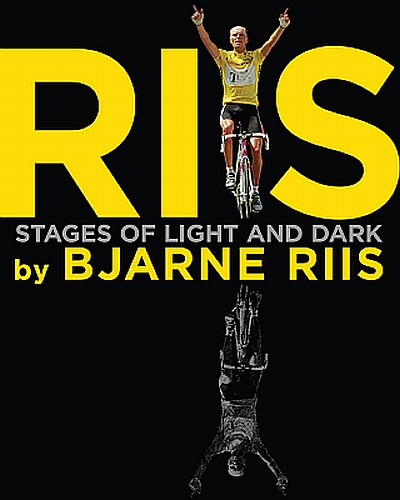
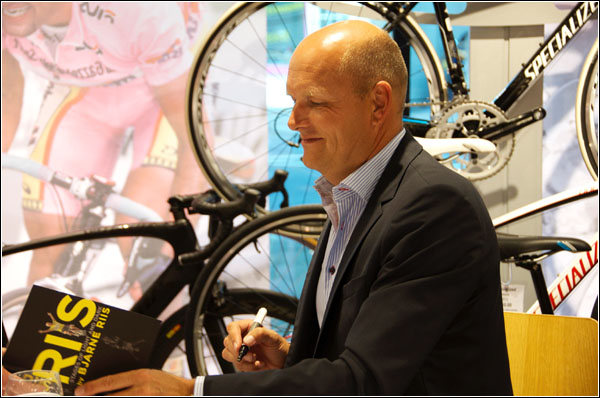
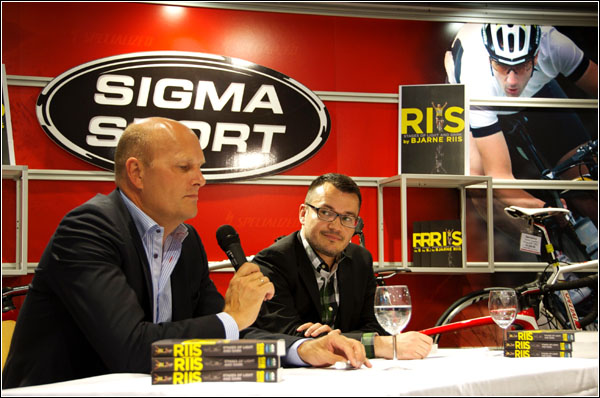



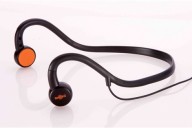


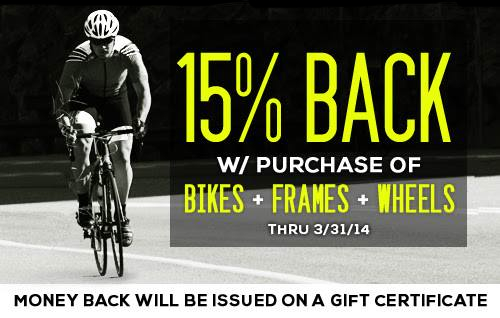

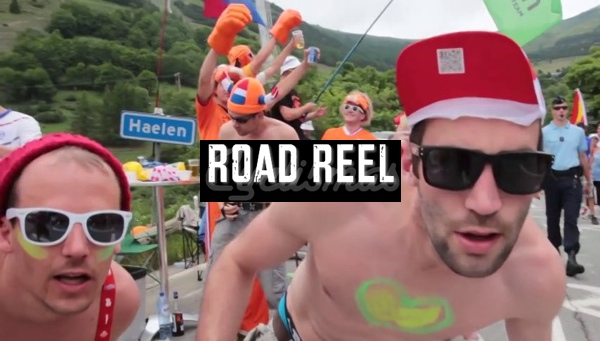
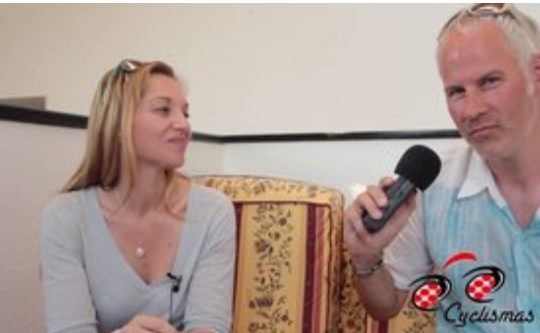

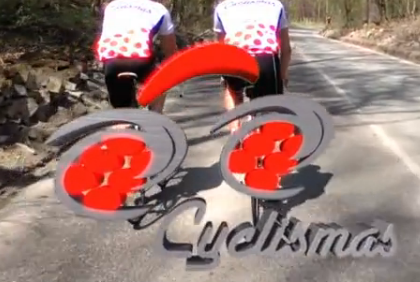

2 Comments
[…] http://cyclismas.com/2012/06/review-…y-bjarne-riis/ Review of Riis's book… pretty damn good article. […]
[…] voor een Deense renner en gaat een keus maken tussen Riis en zijn landgenoot Per Pedersen, schrijft Cyclismas.com. Het wordt […]